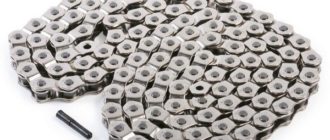Would you be interested in knowing how fast you are biking? Or how many kilometers you have already covered? Certainly many people have been thinking about this for a long time, and some have already installed a special device on their bikes – the odometer for bicycles.
Manufacturers very rarely equip bicycles with devices for measuring speed or mileage. Such devices cyclists install after buying a bike on their own. It is important to choose the right device, because some models work late or have inaccuracies. Also, special attention should be paid to the method of installation. Otherwise, the purchase of the device will be meaningless, and the device will not meet your expectations.
Bicycle odometer bicycle odometer is in demand because it has the following advantages:
- low price – the purchase will not hit the wallet;
- simple instructions for installation, which means you do not need to look for a master;
- The most important thing is the accuracy of measurements.
Speed and distance traveled are interesting not only for professional athletes, but also for beginners.
What is a bicycle odometer
Odometer for a bicycle – what is it?
The odometer is a device that measures the number of revolutions of the wheels of a bicycle. In other words, you can use the odometer to find out the mileage of a bicycle, both daily and total kilometers.
The display shows the numerical values. Therefore, the cyclist can find out all the characteristics while riding a bicycle, just with a quick glance at the device, which is undoubtedly convenient.
The device of the odometer for a bicycle
Regardless of the type of model, the device works on the same principle. The odometer on a bicycle has the following main parts:
- Counter – counts the number of revolutions of the wheels when moving.
- Controller – captures the revolutions that the counter has determined.
- Indicator – reflects the numerical indicators on the display of the device.
Varieties of odometers differ from each other by the way the pulses are transmitted:
- Mechanical – the pulse comes due to the drive wheel, which is in contact with the bicycle tire.
- Electromechanical – the pulse comes through a cable to the electronic panel with the help of a sensor.
- Electronic – the electrical impulses come to the display of the device.
Types
As noted earlier, there are three types of odometers:
- Mechanical.
- Electromechanical.
- Electronic.
A mechanical odometer for a bicycle is the first model of the device, which appeared on the market. Now they are slowly being superseded by more modern devices. But despite this, the mechanical ones have a number of weighty advantages.
Principle of operation:
- A flexible cable rotates simultaneously with the wheel.
- The rotation is transmitted to the magnetic arrow by means of the output shaft.
- The magnetic arrow shows the numerical value on the display of the device.
Advantages of a mechanical odometer:
- Easy installation and adjustment.
- Possibility of self-repair and replacement of batteries.
- Low cost.
Disadvantages of the mechanical odometer:
- Automatic zeroing when a certain numerical value is reached.
- Can make it difficult to move the wheels of the bike.
- Incorrect readings due to dirt, dust and other debris.
This device is not suitable for those who choose to ride their bicycle in mountainous terrain or off-road. This is due to the possibility of breakage or contamination. Mechanical odometer is perfect for quiet walks in the city limits, where the device will not be threatened by dirt and curved terrain.
Electromechanical odometer is a more modern model of the device, which reads the number of revolutions of the wheel with the help of a mechanical device.
Principle of operation:
- A rotating gear transmits force to an electromechanical sensor.
- The device generates electrical impulses that are transmitted to the speedometer unit.
- An electric motor, which acts as a meter, is set in motion.
Electromechanical odometers are not only used for bicycles. They are installed in many modern cars to count mileage.
The electronic odometer is a modern model of the device, fully electronic and without mechanical elements.
Principle of operation:
- A reed attached to the body is a sensor. It is he who counts the number of revolutions of the wheels of the bicycle.
- A magnet mounted on the spokes causes the sensor to activate and transmit data.
- Liquid crystal indicators show the numerical values on the display.
In the electronic odometer to twist the mileage quickly will not work, this requires a specialist. Therefore, it is quite difficult to cheat.
The electronic model is more like a bicycle computer than a speedometer. The display shows many characteristics that are useful for cyclists.
Operating principle
The basic principle is to transmit pulses from the wheels and display them on the display. The transmission itself varies depending on the type of device.
Based on the fact that one kilometer is a certain number of wheel revolutions, the odometer measures the number of revolutions and calculates the distance traveled using the length of the wheel.
The meter determines the revolutions by means of a controller, and the indicator displays the figure on the odometer’s display.
Modern models of odometers display the following characteristics:
- mileage (total and daily);
- trip length;
- cadence (number of pedal revolutions per minute);
- time on the course;
- speed (average and current).
Are there errors
As with any device, odometers can have inaccuracies and inaccuracies in their operation.
The amount of inaccuracy depends on the riding conditions. The more difficult the distance and weather conditions, the more likely it is to be inaccurate. For example, when driving in the mountains or rough terrain, the error can increase by up to 15%.
Causes of inaccuracies in the instrument:
- Slipping of the bicycle or pedals spinning.
- Loose flex cable. If it is not tightened, the values are distorted.
- Loose parts. Over time, elements can come loose, so it is worth checking them periodically, and if necessary, tighten them.
Statistics of the magnitude of the error depending on the type of device:
- mechanical – up to 15%;
- electromechanical – up to 5%;
- Electronic – up to 1%.
The electronic odometer, which is more like a bicycle computer, eliminates the possibility of error. Because it has no mechanical connections, which can fail. This is something a mechanical odometer cannot boast of.
Tuning
Setting up and installing an odometer differs depending on the type. To set up an electronic device, you must enter the values of the bike’s characteristics.
Steps for setting up the electronic device:
- Indicate the length of the wheel. Many models show this feature as a C on the display. If you do not know the wheel length, measure it yourself.
- Use a centimeter tape to do this. Know the perimeter of the wheel tire by simply wrapping the tape around the tire.
- Or put a brightly colored mark on the tire and roll the bike on the pavement. In this way, measure the length of the wheel by rolling the bike one turn of the wheel.
- Install the sensor on one of the fork blades or on the bike frame. Route the odometer wire around the fork and brake cable.
- Attach a mounting pad to the handlebar or stem that will act as a holder for the electronic device.
- Mount the magnet on the spoke of the wheel. Make sure that the screw does not overtighten and the magnet does not break. The distance between the sensor and the magnet should not exceed 3 millimeters.
- Install the electronic odometer on the mounting pad, which is already attached to the handlebar or stem.
Next, test the operation of the device. Take a test drive to see if the odometer is working this way and if the numbers are correct.
If the numerical readings aren’t correct, then one of the five points was wrong. Check them more carefully.
Selection tips
Choosing accessories is just as important as choosing the bike itself. To ensure that the part needs repairs as rarely as possible, take the time to find a decent unit. If you really need an odometer, and you want to use it for its intended purpose for more than one season, then use the following tips.
When choosing an odometer pay attention to the following:
- The durability of the device and the quality of the body.
- The limit of the numerical value readings.
- Type of attachment to the bike.
- The number of features that are reflected on the display.
- Reliability in service and manufacturers’ warranties.
Proven manufacturers of odometers:
- VDO;
- BBB;
- Cateye;
- Sigma.
When selecting an odometer, consider your riding style. If you are a cyclist, and your speed figures can exceed 99 km / h, then many odometers will not suit you. That’s because most models have a 99 km per hour speed limit in their settings. Then you should look for models that can operate at higher speeds.
The size of the device can range from a large bicycle computer to a miniature wristwatch. The performance in this case does not suffer, here the difference is in the usability.
If you like to ride in the rain, then look for a waterproof device that will not be affected by water.
Conclusion
For many people, it is important to transfer information into numbers. This way there is specificity, you can trace the dynamics and see the development. An odometer is a great device to help you start controlling your bike rides.
With it, you will be able to estimate the kilometrage of the walk and clearly see the distance covered in numbers. In addition to checking yourself and your own efforts, the odometer helps to track the timing for repairs and maintenance of the bike. Just like a car, a bicycle needs timely maintenance.
An odometer makes it easy to keep track of your bike and encourage you to ride it as often as possible.











Great article! This was a helpful overview of what a bicycle odometer is, the different types available and how they work. It’s great to know more about this device so that i can make an educated purchase for my bike.